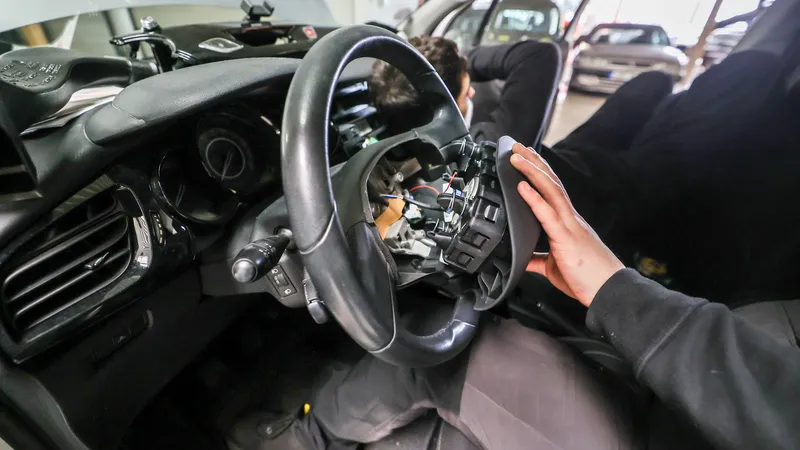/regions/2025/02/18/maxnewsspecialtwo125893-67b4afc541ab7113784647.jpg)
Tuesday, February 25, the automaker announced the recall of around 68 Citroën, Peugeot and Opel vehicles for “fire risks” linked to an internal part of the pure tech engine. A week ago, the group had already immobilized 236,000 cars due to an airbag problem.
Most of the day: our exclusive selection
Every day, our editorial staff reserves you the best of the regional info. A selection just for you, to stay in connection with your regions.
France Télévisions uses your email address to send you the newsletter “The essentials of the day: our exclusive selection”. You can unsubscribe at any time via the link at the bottom of this newsletter. Our Privacy Policy
The weeks follow and look alike for the automaker Stellantis. A week after asking for the immobilization of 236,000 vehicles due to the defective Takata airbags, the company recalled a new slew of cars this start of the week, as indicated by our colleagues from Provence.
What models are concerned?
This time these are around 68,000 vehicles:
57,000 Citroën C3 (Recall code NS8),
2,500 Peugeot 208 (MV2 recall code),
8,700 Opel Corsa and 1 Opel Crossland (KQ9 reminder code)
All have in common to be equipped with an engine that has become sadly famous, the Pure Tech 1.2 L engine, and to have been built between 2022 and 2024.
What are the risks incurred?
Why this new reminder? Stellantis invokes “a risk of fire” linked to the presence of a defective part in the engine, provided by a subcontractor. According to the company, no departure from fire has yet been reported, it is therefore a prevention reminder.
Several things can alert you: if you hear a snap noise in your engine, if you face a sudden loss of propulsion or an unexpected setting, you can be affected.
How to solve this problem?
What to do next? The automaker indicates that all drivers will receive a letter indicating to them to go to their dealer for a free intervention of around 30 minutes. It simply consists of changing the engine oil and the oil filter.
New problems for Stellantis vehicles
The past few weeks are particularly agitated for the Stellantis company, which has been on vehicle reminders. On February 17, the Citroën group asked more than 230,000 users of C3 and DS 3 models to no longer use their vehicle Until the Takata airbags replacements, declared dangerous. This airbag model has already killed several people in France, including one in mainland France.
/regions/2025/02/18/maxnewsspecialtwo125893-67b4afc541ab7113784647.jpg)
The Takata airbags of the Citroën C3 and DS 3 manufactured between 2008 and 2013 must be replaced in the group’s garages or workshops of the group. • © Lionel Vadam / Maxppp
Faced with the impressive number of cars concerned, the Citroën group had used eight of its factories in the northern part of France, including that stellantis of Sochaux in the Doubs.
/regions/2024/06/14/maxnewsworldfive785128-666c145a8092a162456516.jpg)
Today, the Stellantis factory in Sochaux has around 6,000 employees, compared to 17,000 in 2002. • © Lionel Vadam / Maxppp
Before that, Puretech engines had still been talked about and continue to wave the automotive news. On many vehicles equipped with this three -cylinder petrol engine, a risk of premature wear of the distribution belt arose, with overconsumption of oil, mostly causing the engine breakage.
On January 16, 2025, Stellantis announced launching a retroactive compensation platform for customers who had problems with their Puretech engine between 2022 and 2024. On February 14, nearly 900 motorists have filed a complaint against Stellantis, accusing the manufacturer of deception and endangering. According to them, the recurrent breakdowns of the PureTech 1.2 engine would cause significant costs, a loss of value of vehicles and safety risks.
